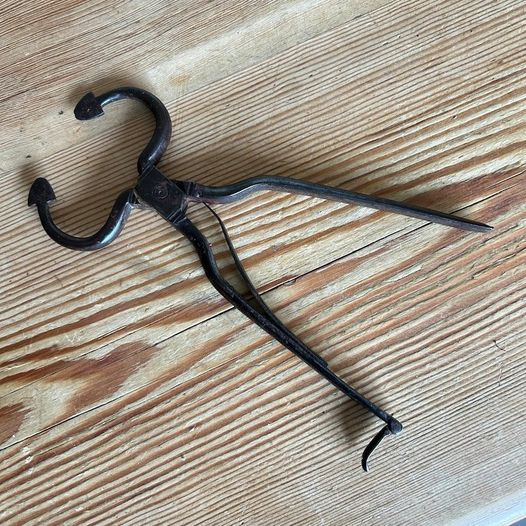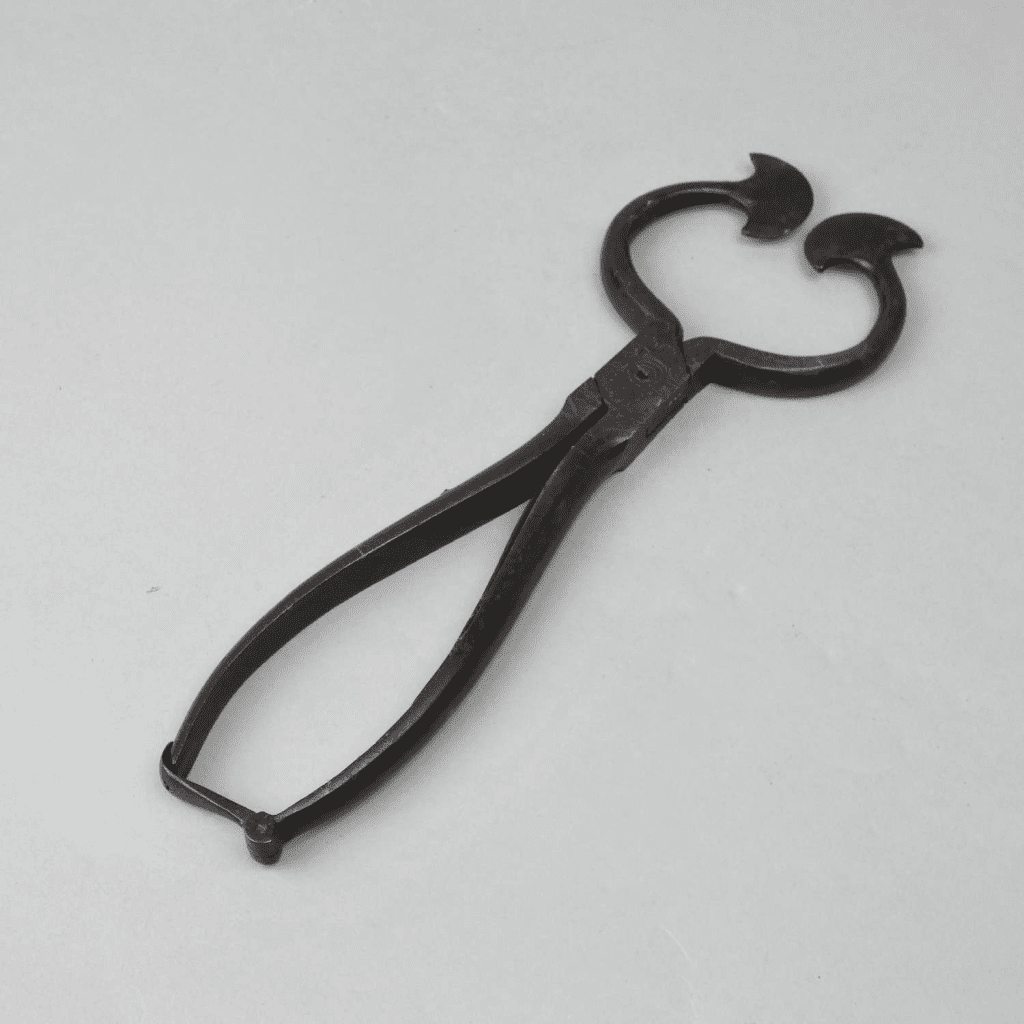Iron sugar nippers hold a unique place in culinary history, dating back to the 17th and 18th centuries when sugar was not the everyday staple we know today. During this period, sugar was an expensive luxury, sold in large, solid loaves or cones. To break off usable portions, households needed sturdy tools known as sugar nippers. These iron nippers, often resembling large scissors, played a crucial role in preparing sugar for use in cooking and sweetening beverages. Let’s explore the history, usage, and legacy of these fascinating tools that once graced kitchens across Europe and beyond.
The Origins of Iron Sugar Nippers

In the 17th and 18th centuries, sugar was primarily available in large, hardened cones or loaves. This form was due to the methods of sugar refining at the time, which involved crystallizing sugar into solid blocks. For many, sugar was a rare and costly commodity, accessible only to the wealthy. As such, it wasn’t sold in the fine, granulated form we are familiar with today but instead in these dense cones that required specialized tools to break apart.
This is where iron sugar nippers came into play. These tools were designed to snap off small, manageable chunks from the sugar loaves. Typically made from cast iron, sugar nippers featured long handles to provide leverage and sharp, pointed blades to grip and cut through the solid sugar. Wealthier households often had ornate versions of these nippers, crafted not only for functionality but also as symbols of status and wealth. On the other hand, simpler, more utilitarian versions were common in modest homes.
How Sugar Nippers Were Used
The primary purpose of sugar nippers was to break large sugar loaves into smaller pieces that could be used in cooking or to sweeten beverages like tea or coffee. Using them required a bit of skill. The user would position the nippers’ blades around the section of the sugar loaf they wanted to break off. With a firm squeeze of the handles, the nippers would “nip” off a chunk of sugar, ready for use.
One of the remarkable aspects of sugar nippers was their adaptability. The size of the pieces produced depended on the strength of the person using the tool and the specific nippers’ design. Larger nippers, used in commercial settings like bakeries, could break off bigger chunks for baking, while smaller household versions created more delicate pieces for daily use. Given the expense of sugar at the time, even these small chunks were often used sparingly.
Sugar nippers were also commonly found in apothecaries, where sugar was frequently used to sweeten medicinal concoctions. Pharmacists would use sugar to mask the bitter flavors of remedies, making them more palatable for patients. In this context, sugar nippers were an essential tool, allowing precise portions of sugar to be added to medicinal recipes.
The Decline of Sugar Nippers in the 19th Century
The use of sugar nippers began to decline in the 19th century as sugar production became more industrialized. With advancements in refining techniques, sugar became cheaper and more accessible to the general public. The introduction of granulated sugar, which did not require breaking into pieces, made sugar nippers increasingly obsolete.
As granulated sugar became the norm, households no longer needed tools to break down sugar loaves. By the mid-19th century, sugar nippers had largely disappeared from everyday use, replaced by sugar spoons and tongs designed for handling the fine granules or cubes that became popular in tea and coffee culture. However, while their practical function faded, sugar nippers left behind a rich historical legacy that continues to captivate collectors and historians alike.
The Legacy of Iron Sugar Nippers: A Window Into the Past

Though sugar nippers may no longer be a common kitchen tool, they have left an indelible mark on culinary history. Today, vintage iron sugar nippers are highly collectible, valued for their craftsmanship and historical significance. These tools offer a tangible connection to an era when sugar was a symbol of wealth and luxury, and even simple household items were designed with care and attention to detail.
Collectors and enthusiasts often seek out sugar nippers for their aesthetic appeal as well as their function. The sturdy, practical design of these tools, often featuring ornate detailing, makes them a striking addition to collections of antique kitchenware. Moreover, they serve as a fascinating reminder of how food preparation and consumption have evolved over the centuries.
Sugar nippers are now commonly found in museums and private collections dedicated to culinary history. They are appreciated not only for their utility but for the way they reflect the social and economic context of their time. In a world where sugar was rare and expensive, owning sugar nippers was a necessity for those who could afford this prized commodity. The elegance of the tool often mirrored the wealth and status of the household it belonged to.
The Craftsmanship of Sugar Nippers: Function Meets Style
One of the most striking aspects of vintage sugar nippers is the quality of their craftsmanship. Made primarily of cast iron, these tools were built to last. The long handles provided the necessary leverage to break off pieces of dense sugar, while the sharp blades ensured precision. Many sugar nippers were also beautifully decorated, with intricate designs that reflected the artistry of blacksmiths and metalworkers of the time.

For wealthier families, sugar nippers were often crafted with embellishments such as engraved designs or ornate handles, making them both functional tools and decorative items. These nippers were sometimes displayed proudly in kitchens or dining rooms, serving as status symbols that reflected a household’s ability to afford luxury goods like sugar.
Sugar Nippers as a Symbol of Culinary History
Today, iron sugar nippers serve as an enduring symbol of a bygone era in culinary history. They remind us of a time when sugar was a rare and treasured commodity, and the tools used to prepare it were designed with a balance of practicality and beauty. As interest in vintage and antique kitchenware grows, sugar nippers remain a popular collectible, admired for their craftsmanship and their connection to the history of food.
Conclusion: The Enduring Appeal of Iron Sugar Nippers
Iron sugar nippers may no longer be essential in today’s kitchens, but their legacy lives on. From their origins in the 17th century to their role in shaping culinary history, these tools are more than just relics of the past—they are a testament to the artistry and craftsmanship of an era when even the most basic kitchen tools were made with care. Today, they serve as both functional collectibles and symbols of a time when sugar was a luxury, and preparing it required skill and precision.
As a reminder of the evolution of food preparation, sugar nippers continue to fascinate collectors and history enthusiasts alike, ensuring that their place in culinary history remains secure.


